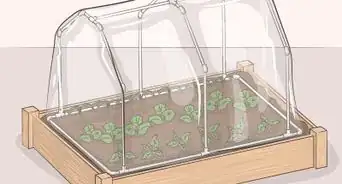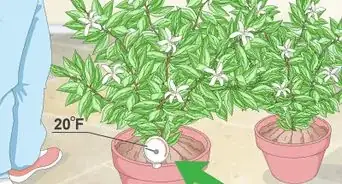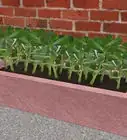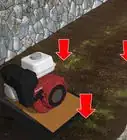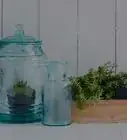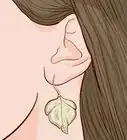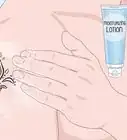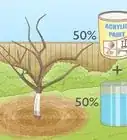wikiHow is a “wiki,” similar to Wikipedia, which means that many of our articles are co-written by multiple authors. To create this article, 10 people, some anonymous, worked to edit and improve it over time.
This article has been viewed 28,363 times.
Learn more...
If you need a cheap, quick-and-dirty greenhouse to extend your growing season a while longer, this may be the solution for you.
Steps
-
1String up a clothesline between two bare trees, tightly, about head-high.
-
2Drape a clear plastic sheet over the clothesline. A standard 9'x12' size works okay, but for more space the bigger the better. Clip it with clothes pins to keep it in place.Advertisement
-
3Spread out the sides like an old army pup-tent and fasten them to the ground with rocks or bricks. You can cover the air gaps by piling dirt on top.
-
4Tape the flaps together on North end only. The south end -- the entrance -- will be fastened by clothespins.
-
5On the inside, some old warehouse pallets or fruit crates are great for keeping your potted plants off the cold ground. Alternatively, you could add the heated made from clay pots which is powered by a single tinned candle that expires on it's own when the wax is gone to add a bit of heat.
-
6To form a super-insulated greenhouse, string up another clothesline about 6–12 inches (15.2–30.5 cm) above the first one. Drape 2 larger drop-clothes over that and fasten like the first one. This will create a double-walled greenhouse with an insulative layer of air between. It will provide added protection to plants.
Community Q&A
-
QuestionWhere do I get these materials?
 DonaganTop AnswererTry a hardware, home-improvement, or farm-supply store.
DonaganTop AnswererTry a hardware, home-improvement, or farm-supply store.
Warnings
- Don't forget to dismantle this eyesore before the in-laws come to visit... but put it back up as soon as they leave!⧼thumbs_response⧽
4 Types of Greenhouse Plastic to Use 139 Shares6748
There are a lot of different benefits to using greenhouse plastic for building your own greenhouse. They are very easy to build and cost much less than a large glass frame. The plastic is what is going to maintain the heat and humidity in the greenhouse. Depending on the type of plastic that is being used, you can grow a wide variety of flowers even when the winter weather sets in.
What Is Greenhouse Plastic? Greenhouse plastic is made to be more durable than regular plastic. Regular plastic sheets will tear easily when cut because the ends fray, but greenhouse plastic is specially made to resist tearing and stand up to weather. It is actually knitted instead of just formed into sheets.
This type of plastic is perfect for wrapping around different sizes and shapes of greenhouse structures, and can be framed around vents, doors, and windows.
Types of Greenhouse Plastic Greenhouse plastics are mostly made out of four different types of plastic. These plastics will generally all last about 2 to 3 years before they need to be replaced. Of course, this does not take into account extreme weather such as hurricanes, tornadoes, hail, and severe icing.
Polyethylene Plastic
The first type of greenhouse plastic is called polyethylene plastic. This type of plastic is also available in two different strengths: commercial grade for large industrial applications and a utility grade for personal use. Most home centers will carry the utility grade. Polyethylene plastic will last for a year or two when kept in good condition, and smaller tears can be repaired with a poly repair kit.
Copolymer Plastic
A grade above the polyethylene plastics is the copolymer plastic. It is a little more durable and longer lasting; it can last on your greenhouse upwards of three years before it begins to turn brittle and break. The freezing and thawing of the plastic will cause it to be brittle after a few years. There are also more expensive copolymer plastics that are even more durable and will mimic the effects of glass.
Polyvinyl Plastic
This is a more expensive type of plastic compared to the other two, however, it is even more durable than the previous two. Greenhouses covered over in polyvinyl plastic will benefit from the strength of this plastic. Replacement does not have to happen until after five years if you have taken good care of it with regular cleaning and inspection.
Polycarbonate Plastic
The most durable of all the greenhouse plastic is called polycarbonate plastic. It is actually a double, or a twin wall, polyethylene plastic. It can last for up to a decade if cared for correctly. It will also maintain a lot of heat and humidity for year-round growing.
If you are building, or thinking of building, a greenhouse, look into these greenhouse plastics for an inexpensive and easy do-it-yourself greenhouse option.
- Try not to position your greenhouse either on a ridge-top or deep in a valley. These areas are especially prone to winter winds and freezing. The optimal location is on a southern-facing slope, below a patch of woods, if possible. The cold air blowing through the woods is demonstrably warmer than an unimpeded cold air flow.⧼thumbs_response⧽
- This will not work through the winter in the north as the plastic shatters in the cold temps with any wind. Do not sacrifice your plants zone 5 and above. Even several layers of 3 mil plastic will not survive the snow or cold.⧼thumbs_response⧽
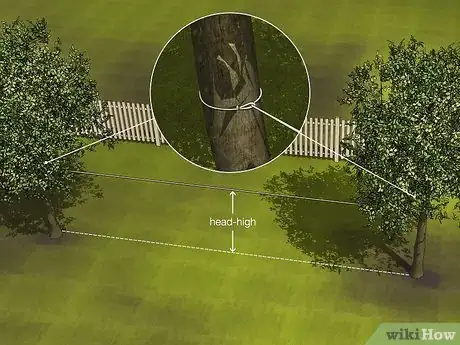
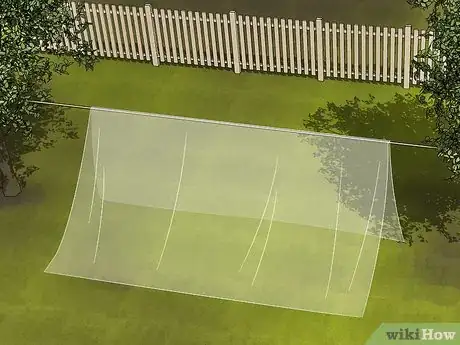
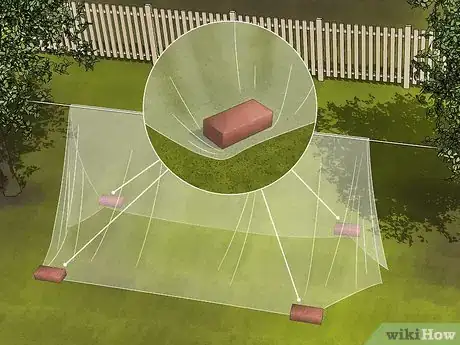
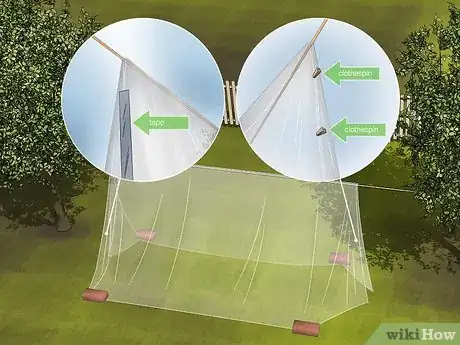
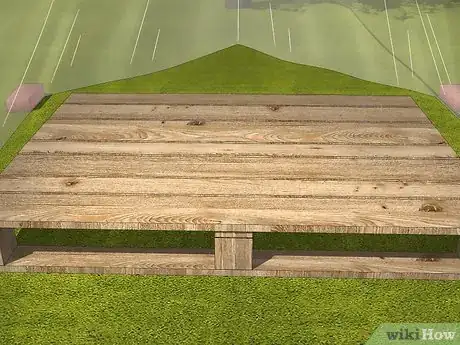
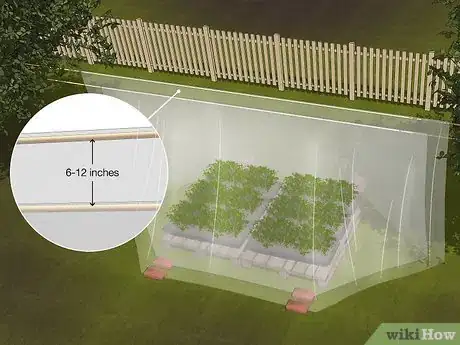
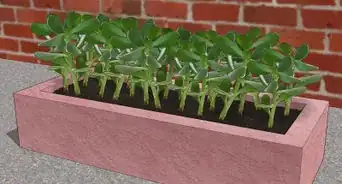
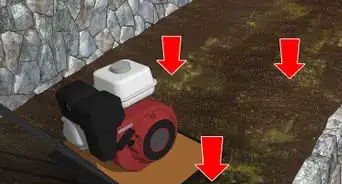


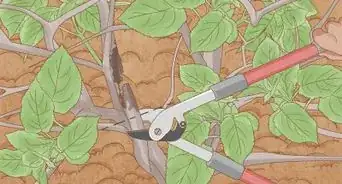

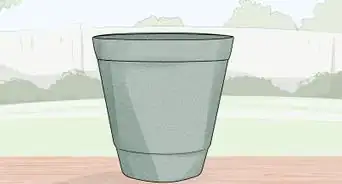

-Oven-Step-15.webp)
